Feedback and recognition are essential tools for motivating learners and fostering a positive learning environment
Here’s how you can use them effectively:
Provide timely feedback: Give feedback as soon as possible after an activity or assessment while the learning experience is still fresh in the learners’ minds. Timely feedback helps learners understand their strengths and weaknesses and allows them to make improvements immediately.
Be specific and constructive: When giving feedback, focus on specific aspects of the learners’ performance and provide clear guidance on how they can improve. Avoid vague or generic comments. Instead, offer concrete suggestions for improvement that learners can act upon.
Balance positive and negative feedback: Recognize and praise learners’ accomplishments and progress while also addressing areas for improvement. A balanced approach helps learners feel valued and motivated to continue working hard.
Encourage self-assessment and reflection: Guide learners to evaluate their own performance and reflect on their learning experiences. This promotes self-awareness and helps learners take responsibility for their learning progress.
Create a safe and supportive environment: Foster a learning atmosphere where learners feel comfortable sharing their thoughts, asking questions, and making mistakes. Encourage open communication and ensure that feedback is respectful and non-judgmental.
Use various feedback formats: Utilize different feedback methods, such as written comments, one-on-one discussions, or group debriefs, to cater to diverse learning preferences and communication styles.
Set clear expectations: Clearly communicate your expectations for learners’ performance and progress. This helps learners understand what they need to achieve and guides them in meeting those expectations.
Recognize individual and group achievements: Celebrate both individual and collective accomplishments to create a sense of shared success and promote a sense of belonging within the group. Recognition can come in various forms, such as verbal praise, certificates, or small rewards.
Encourage peer feedback: Facilitate opportunities for learners to give and receive feedback from their peers. This helps learners develop their communication and collaboration skills and can provide them with valuable insights from different perspectives.
Monitor progress and adjust feedback: Regularly assess learners’ progress and adjust your feedback and recognition strategies accordingly. As learners develop new skills and knowledge, your feedback should evolve to address their changing needs and growth.
By using feedback and recognition effectively
…you can create a motivating and supportive learning environment that encourages learners to take ownership of their learning, develop their skills, and strive for continuous improvement.
To motivate learners using feedback and recognition, provide timely, specific, and constructive feedback that balances positive and negative aspects.
Encourage self-assessment, reflection, and peer feedback while creating a safe and supportive learning environment.
Clearly communicate expectations and recognize individual and group achievements.
Continuously monitor progress and adjust your feedback strategies as needed to address learners’ changing needs and growth.
References:
“Mindset: The New Psychology of Success” by Carol S. Dweck
“Drive: The Surprising Truth About What Motivates Us” by Daniel H. Pink
“Visible Learning for Teachers: Maximizing Impact on Learning” by John Hattie
“How to Give Effective Feedback to Your Students” by Susan M. Brookhart
“The Feedback Fix: Dump the Past, Embrace the Future, and Lead the Way to Change” by Joe Hirsch













